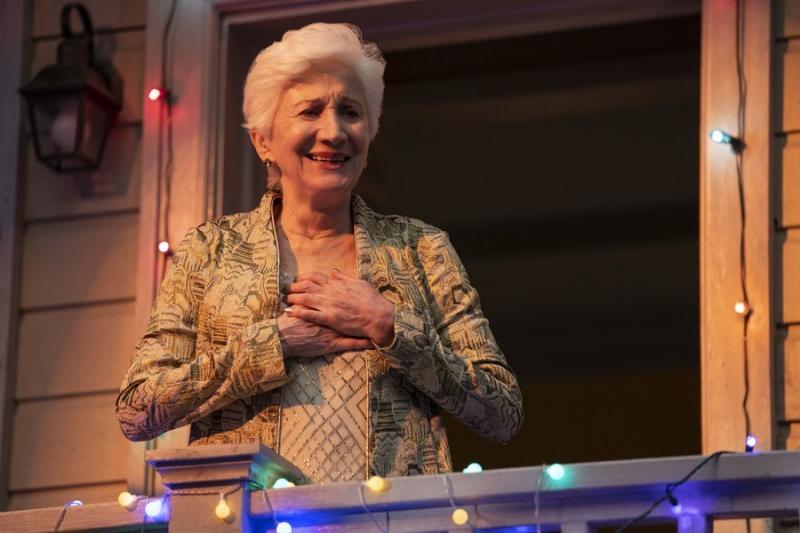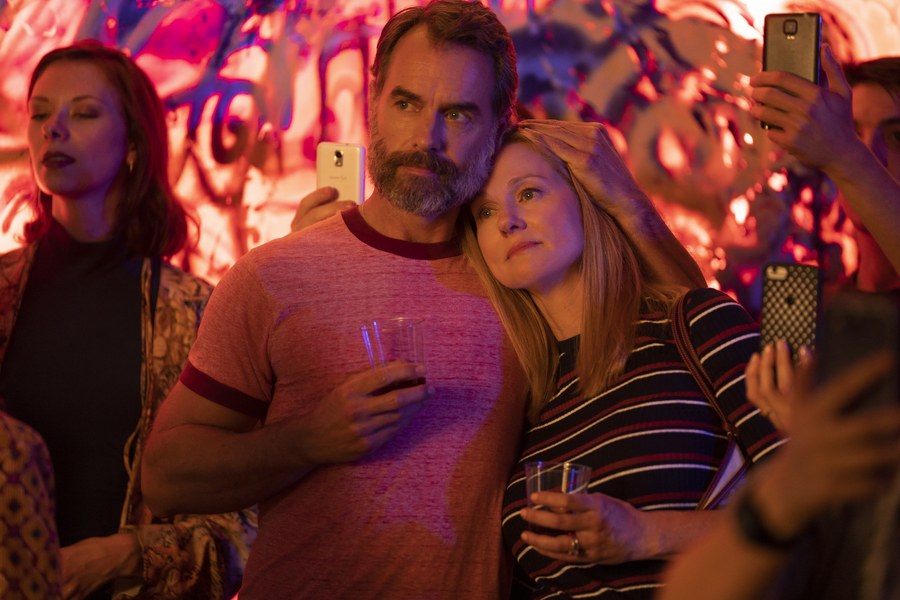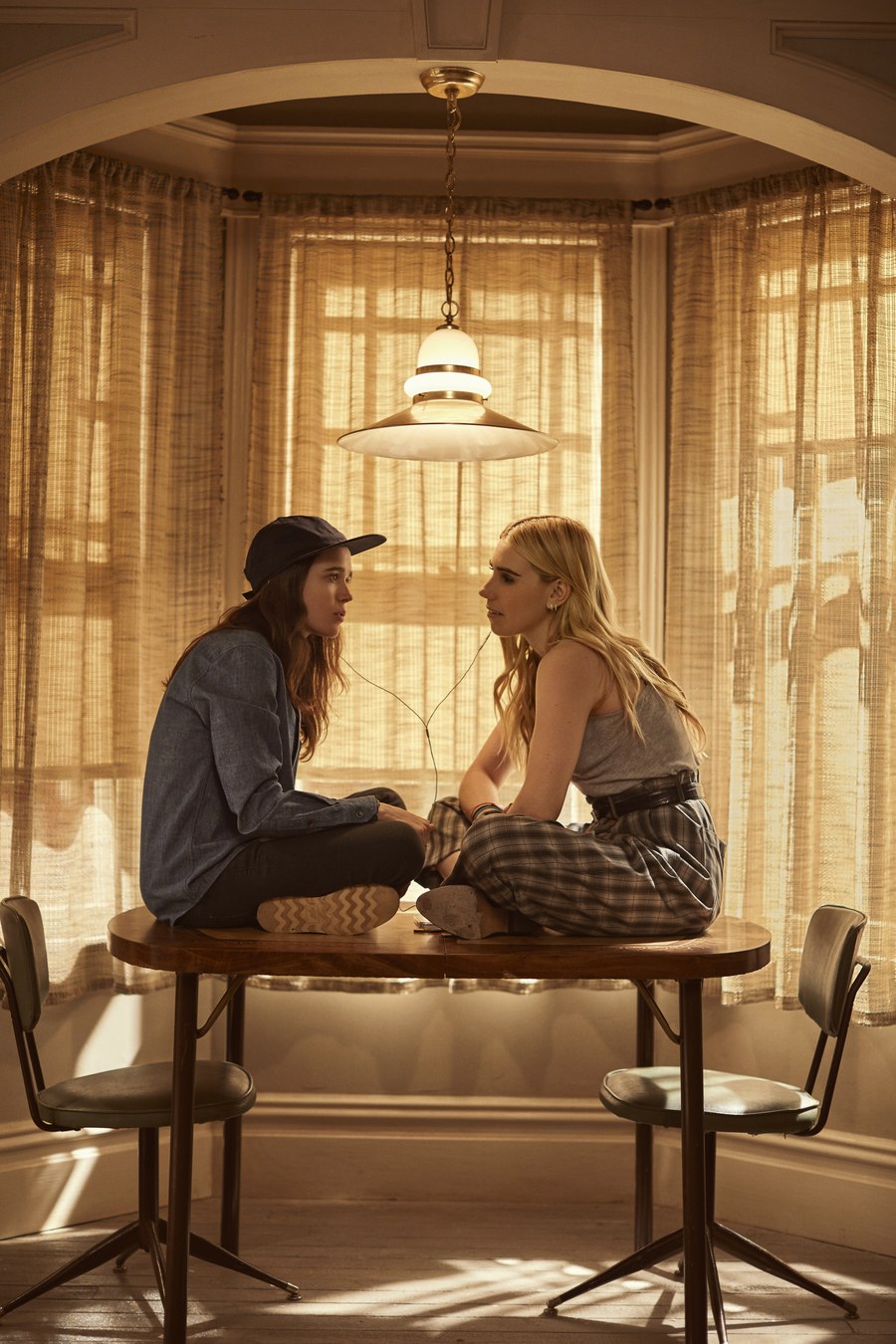Armistead Maupin's Tales of the City, Netflix, review - sex and dope soap is back in San Francisco | reviews, news & interviews
Armistead Maupin's Tales of the City, Netflix, review - sex and dope soap is back in San Francisco
Armistead Maupin's Tales of the City, Netflix, review - sex and dope soap is back in San Francisco
The pioneering stories of LGBT+ lives and loves resume with new faces and old

It helps to be of a certain vintage to appreciate the first impact of Tales of the City. Armistead Maupin’s column, begun in the San Francisco Chronicle in 1978 as a frank and joyous portrayal of gay culture, became a series of half a dozen cult novels. These started appearing in the UK from the mid-1980s.
The next three novels, which culminated in the departure from San Francisco of its female protagonist Mary Ann Singleton, were never adapted. Now Netflix has assembled the same main characters and thrown them all together in contemporary San Francisco where Anna Madrigal is still presiding over her ramshackle home in Barbary Lane (recreated on a soundstage in, of all places, Brooklyn). As a rubber-stamp of authenticity, the author's name is enshrined in the title: Armistead Maupin's Tales of the City, although he's more of an executive producer (as is original star Laura Linney).
If you do the math, all the returning characters who were 20 in the late 1970s should be 10 years older. Among Barbary Lane’s new younger residents are Shawna (Ellen Page), the daughter adopted by Mary Ann and her then husband Brian Hawkins, who must be in her mid-30s rather than 20s. In a way that no one ever quite was in the original novels, Shawna is so contentedly undecided about which way she swings she gets sucked into the ravenous maw of a married couple who enjoy “team sports”. Then there’s Jake (Josiah Victoria Garcia), a female-to-male transsexual who, having previously been a lesbian, is discovering an attraction for men. This may feel like an appended on-trend plotline, but it actually has been scavenged from Mary Ann in Autumn (2010). And lest we forget, Maupin was a very early adopter of transgenderism as a source of stories. Which brings us to Mrs Madrigal (Olympia Dukakis), who turns 90 in the first episode, occasioning a party which is a slick way of assembling the cast list. Mary Ann (Laura Linney), nervously dragging a grumpy husband with her, comes back from exile in the east to watch her blow out the candles and reckon with her past. The husband has gone by episode two, leaving Mary Ann to plunge head first into a midlife crisis.
Which brings us to Mrs Madrigal (Olympia Dukakis), who turns 90 in the first episode, occasioning a party which is a slick way of assembling the cast list. Mary Ann (Laura Linney), nervously dragging a grumpy husband with her, comes back from exile in the east to watch her blow out the candles and reckon with her past. The husband has gone by episode two, leaving Mary Ann to plunge head first into a midlife crisis.
Dukakis and Linney provide the two most emotionally enriching performances (though Page is very watchable as a wounded bird with a thick skin). Along with Barbara Garrick as DeDe Halcyon Day, who is now a sozzled single philanthropist, they are the only cast members who have a through-line from the first ever series. Paul Gross, who played Brian in the original show before ducking out, is back with silver hair and a weird obsession with dating women who look exactly like Mary Ann. In the tall and ripped Murray Bartlett (pictured above with Linney), Michael “Mouse” Tolliver is onto his third actor. With his hot younger boyfriend Ben (Charlie Bennett) he is the only one of the original characters who is getting any sex, and sex that is shot in a far more full-on way than Maupin can have ever imagined possible when the first series was dropped by PBS after protests at a gay kiss.
 Showrunner Lauren Morelli, a graduate of Orange Is the New Black, and the writers to whom Maupin has handed over custody of his intellectual property have carefully pastiched his taste for sugary soap, characters who wear their hearts on their sleeve, and exploring on-trend sexual issues. If you’ve known the older characters for 35 years, not much has changed: Mrs Madrigal is still a krank who rolls joints and incubates secrets, Mary Ann from the Midwest is fussy and uptight, Mouse a naïve romantic softie and Brian a loveable klutz. The younger ones look like something of an acquired taste, espeically the tedious twins who do performance art. But the show needs them to reel in a new demographic. The polyamorous doings of Shawna, who is hit on by LGBT+ video historian Claire (Zosia Mamet, pictured above right with Ellen Page) and the agonies of Jake and his girlfriend Margot (May Hong) could not be more precision-targeted at a woke audience.
Showrunner Lauren Morelli, a graduate of Orange Is the New Black, and the writers to whom Maupin has handed over custody of his intellectual property have carefully pastiched his taste for sugary soap, characters who wear their hearts on their sleeve, and exploring on-trend sexual issues. If you’ve known the older characters for 35 years, not much has changed: Mrs Madrigal is still a krank who rolls joints and incubates secrets, Mary Ann from the Midwest is fussy and uptight, Mouse a naïve romantic softie and Brian a loveable klutz. The younger ones look like something of an acquired taste, espeically the tedious twins who do performance art. But the show needs them to reel in a new demographic. The polyamorous doings of Shawna, who is hit on by LGBT+ video historian Claire (Zosia Mamet, pictured above right with Ellen Page) and the agonies of Jake and his girlfriend Margot (May Hong) could not be more precision-targeted at a woke audience.
The one area in which this new Tales of the City doesn’t ring true is as a tribute to San Francisco. Maupin no longer lives there – he’s just moved to London, driven out by tech’s wholesale takeover of the city. The original had an element of reportage as it dispatched news from the frontline about bathhouses, Quaaludes and Aids. The new one really ought to be stuffed with geeks in chinos who work for Google and can afford the sky-high rents. They are the city's true inheritors. Instead, this frothy neverland is a pleasant place to while away the hours.
Add comment
The future of Arts Journalism
You can stop theartsdesk.com closing!
We urgently need financing to survive. Our fundraising drive has thus far raised £49,000 but we need to reach £100,000 or we will be forced to close. Please contribute here: https://gofund.me/c3f6033d
And if you can forward this information to anyone who might assist, we’d be grateful.

Subscribe to theartsdesk.com
Thank you for continuing to read our work on theartsdesk.com. For unlimited access to every article in its entirety, including our archive of more than 15,000 pieces, we're asking for £5 per month or £40 per year. We feel it's a very good deal, and hope you do too.
To take a subscription now simply click here.
And if you're looking for that extra gift for a friend or family member, why not treat them to a theartsdesk.com gift subscription?
more TV
 Blu-ray: The Sweeney - Series One
Influential and entertaining 1970s police drama, handsomely restored
Blu-ray: The Sweeney - Series One
Influential and entertaining 1970s police drama, handsomely restored
 I Fought the Law, ITVX review - how an 800-year-old law was challenged and changed
Sheridan Smith's raw performance dominates ITV's new docudrama about injustice
I Fought the Law, ITVX review - how an 800-year-old law was challenged and changed
Sheridan Smith's raw performance dominates ITV's new docudrama about injustice
 The Paper, Sky Max review - a spinoff of the US Office worth waiting 20 years for
Perfectly judged recycling of the original's key elements, with a star turn at its heart
The Paper, Sky Max review - a spinoff of the US Office worth waiting 20 years for
Perfectly judged recycling of the original's key elements, with a star turn at its heart
 The Guest, BBC One review - be careful what you wish for
A terrific Eve Myles stars in addictive Welsh mystery
The Guest, BBC One review - be careful what you wish for
A terrific Eve Myles stars in addictive Welsh mystery
 theartsdesk Q&A: Suranne Jones on 'Hostage', power pants and politics
The star and producer talks about taking on the role of Prime Minister, wearing high heels and living in the public eye
theartsdesk Q&A: Suranne Jones on 'Hostage', power pants and politics
The star and producer talks about taking on the role of Prime Minister, wearing high heels and living in the public eye
 King & Conqueror, BBC One review - not many kicks in 1066
Turgid medieval drama leaves viewers in the dark
King & Conqueror, BBC One review - not many kicks in 1066
Turgid medieval drama leaves viewers in the dark
 Hostage, Netflix review - entente not-too-cordiale
Suranne Jones and Julie Delpy cross swords in confused political drama
Hostage, Netflix review - entente not-too-cordiale
Suranne Jones and Julie Delpy cross swords in confused political drama
 In Flight, Channel 4 review - drugs, thugs and Bulgarian gangsters
Katherine Kelly's flight attendant is battling a sea of troubles
In Flight, Channel 4 review - drugs, thugs and Bulgarian gangsters
Katherine Kelly's flight attendant is battling a sea of troubles
 Alien: Earth, Disney+ review - was this interstellar journey really necessary?
Noah Hawley's lavish sci-fi series brings Ridley Scott's monster back home
Alien: Earth, Disney+ review - was this interstellar journey really necessary?
Noah Hawley's lavish sci-fi series brings Ridley Scott's monster back home
 The Count of Monte Cristo, U&Drama review - silly telly for the silly season
Umpteenth incarnation of the Alexandre Dumas novel is no better than it should be
The Count of Monte Cristo, U&Drama review - silly telly for the silly season
Umpteenth incarnation of the Alexandre Dumas novel is no better than it should be
 The Narrow Road to the Deep North, BBC One review - love, death and hell on the Burma railway
Richard Flanagan's prize-winning novel becomes a gruelling TV series
The Narrow Road to the Deep North, BBC One review - love, death and hell on the Burma railway
Richard Flanagan's prize-winning novel becomes a gruelling TV series
 The Waterfront, Netflix review - fish, drugs and rock'n'roll
Kevin Williamson's Carolinas crime saga makes addictive viewing
The Waterfront, Netflix review - fish, drugs and rock'n'roll
Kevin Williamson's Carolinas crime saga makes addictive viewing

Comments
Ellen Page’s Shauna was such